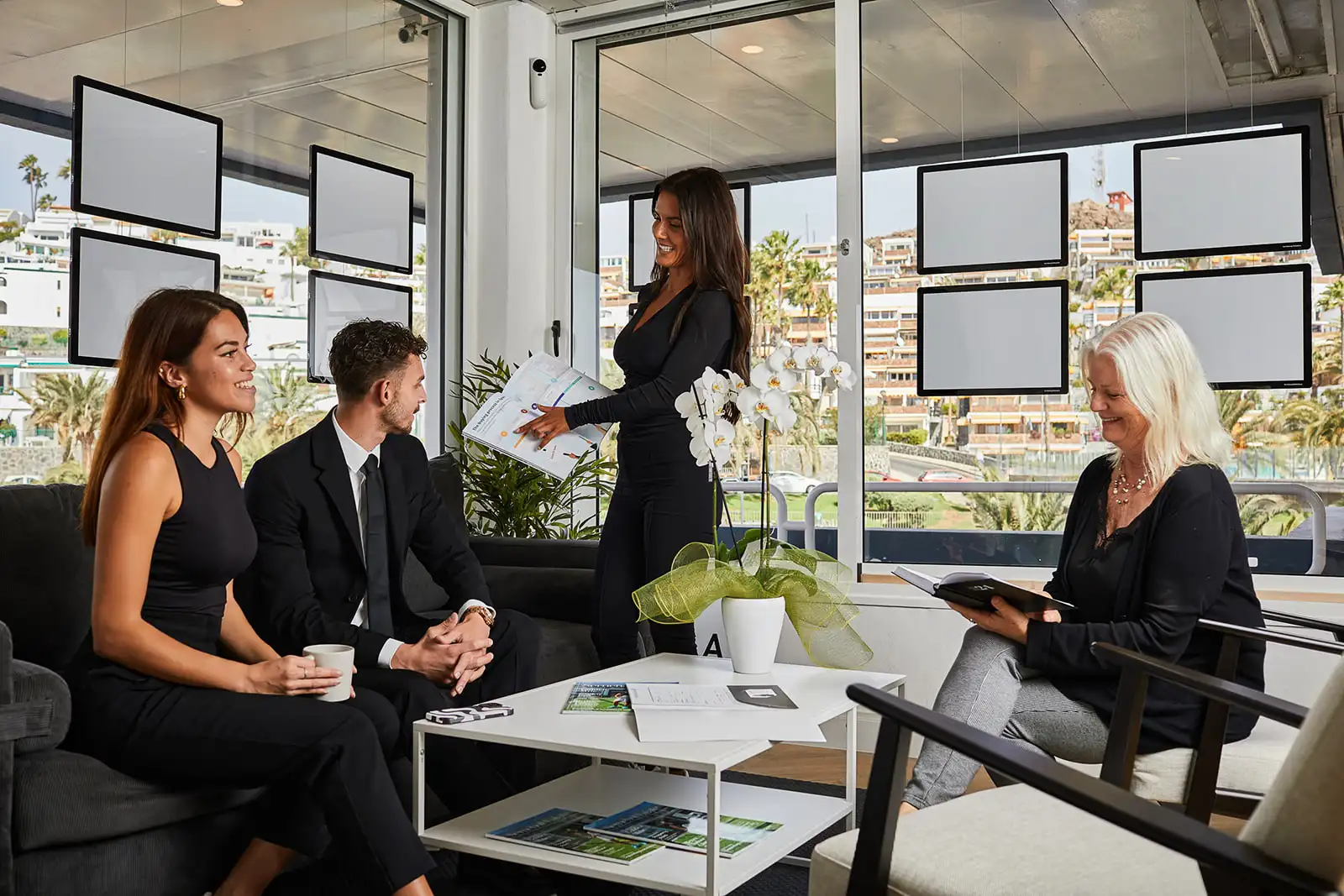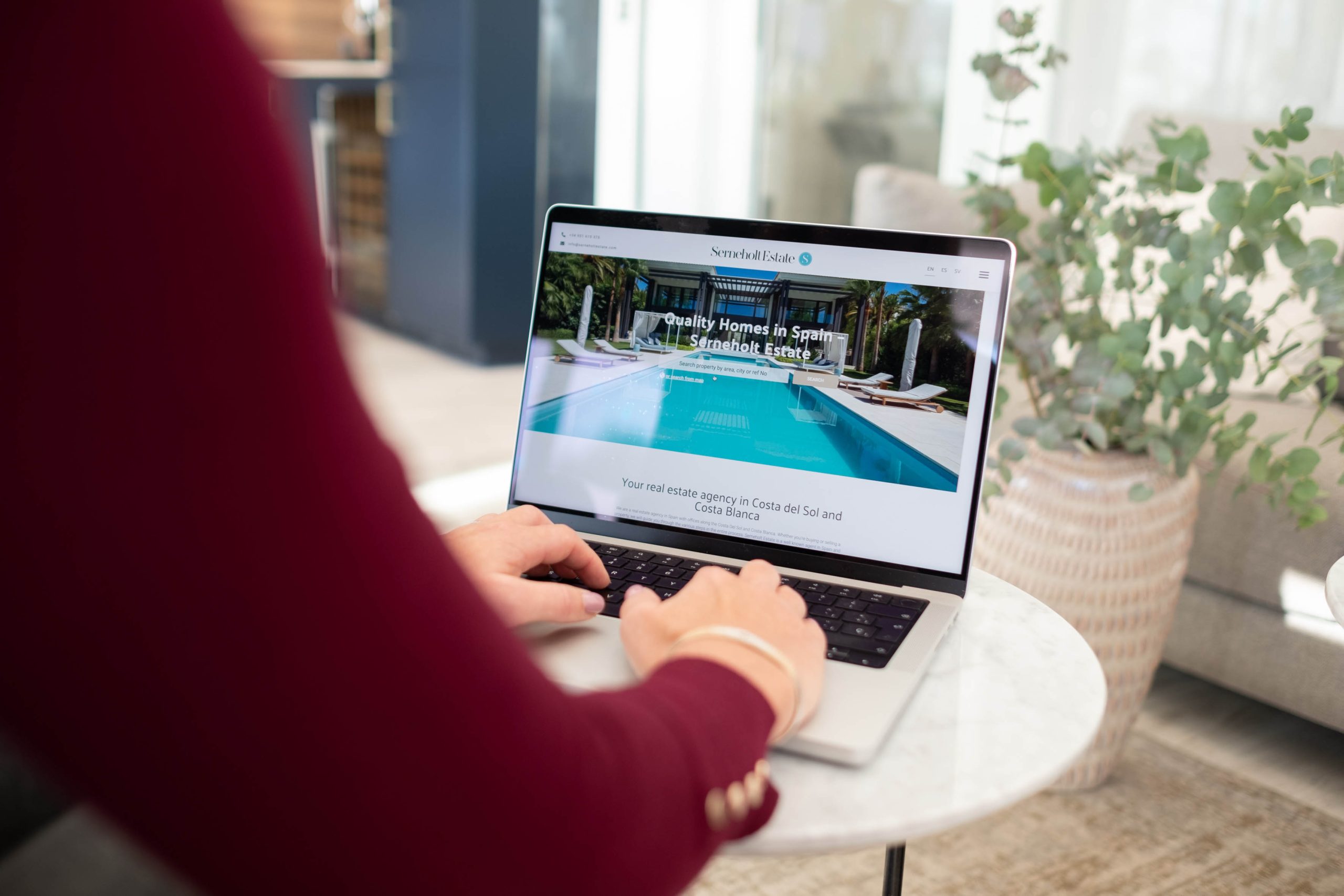When selling a property it’s important to ensure all the steps are taken to make the best sale.
The process of selling a property in Spain
In Spain the transfer of ownership of a property usually goes through a Spanish notary. Knowing what to expect when selling a property is the first step to a successful deal. Working together with the right agent will ensure the process of finding potential buyers, a much easier task. This is why you need to feel confident about the agency’s brokerage skills, how the agent promotes their properties, the language areas they market in, and the online presence they have in the market. At Serneholt Estate we always offer a comprehensive marketing plan upon taking up a new assignment. This bespoke service isn’t commonplace in the Spanish housing market. We, at Serneholt Estate, always prioritise you, the customer, and we will always keep you informed and updated throughout the whole process. To make it easier for you as a seller we have compiled this sales guide. So here is how it works – all the way up to the last meeting with the notary.
Timeline of the selling process
1. Preparations
The first step in the sales
process is to gather all the necessary information about your property. Every property has a unique selling point and with this, we can lay the foundation for a successful sale.
Market value
The next step is an assessment of the value must be made. References from current sales of similar properties are obtained, including data from asking prices and sales from previous years. We also gather references from similar houses or apartments that have been sold recently to keep as up to date with the current market trends. Here at Serneholt Estate, we have full access to all databases and can quickly find reference prices in most areas.
Agreement with the agent
Before starting the sales process, we draw up an agreement between you and us, i.e. Serneholt Estate. This agreement regulates the sales assignment. This is normally “non-exclusive”, i.e. you can still sell through other agents, but you are obligated to pay us our commission if one of the clients we introduce buys your property. It can also be “exclusive”, i.e. you appoint us as the only agent to represent and sell your property.
Finance
What are the actual operating costs of the home you want to sell? What repairs need to be made in the future and at what cost? If the apartment or house you want to sell is part of a Community of Owners (CO), how big is the CO fee (comunidad)?
Energy certificate
As a seller, you are required to provide a declaration of the energy performance of the property in question. This will then be submitted to the buyer in connection with the sale. We at Serneholt Estate will, of course, help with this, as we have many competent partners who draw up energy
performance declarations.
The seller has to provide complete documentation about the property, namely:
Nota simple – Document confirming
legal status of the property
Escritura – Title deeds
Water and electricity contracts or bills
Basura – Payment receipt for refuse collection
Last IBI receipt – The annual local property tax
CO fee – Membership in housing association
2. Marketing
Prepping the property for sale
The first step in marketing is to make it as neutral as possible, in that we mean making it less personalised, this allows clients to easily imagine what they would do with the property. It should be presentable, clean and with no obvious repairs. Try and arrange the furniture to create a warm and inviting environment.
Photographing
Our experienced and competent photographer will assist you in taking professional photos of your property with a focus on making it look as welcoming as possible.
Marketing
We then add the property to our website. This is translated into seven different languages to attract a wide target group. Not only that, we work with several portals, social media sites and have a weekly newsletter, whilst collaborating with other agents to make the sale as quick as possible.
3. Viewings & Bidding
This is when it really hap-pens. You are now ready to show potential buyers around your property and search for the highest bidder.
Viewings
One of the most important factors for a successful viewing is having a well-prepared agent. So, for us, finding out as much as possible before a viewing is a must. We will have done our homework on your property so that the potential buyer feels they are getting all the information they need to feel comfortable, welcome and in good hands.
Auction / Reservation
In Spain, auctions are relatively uncommon, instead, the seller chooses the first buyer who is prepared to pay the asking price. The final price of the property is often directly negotiated between the buyer and seller.
4. Contract
As a seller, it’s not necessary to be present during the sale. If you are un-able to be there through the final stages we can help put together the necessary documentation so that we handle the entire process for you.
Reservation
When the buyer and seller have agreed on a price, a reservation contract is drawn up. This means that the buyer pays a reservation fee to reserve the property so it’s taken off the market. The buyer is responsible for inspecting the property carefully before the sales contract is signed. The premise is that the property is sold in its existing condition, taking into account its age, price and use.
Contract
The next step in the sales process is to sign a contract of sale, called the “Arras”, or “Option de Compras”. At this point the buyer pays 10% (including the reservation fee already paid) of the total purchase price to the seller. This contract is prepared by the buyer’s legal representative.
Ownership title
On the completion date, you and the buyer meet with the agent and the legal representatives at the notary’s office. It’s the buyer’s representative who chooses the notary and who is responsible for booking the appointment. The notary checks both the buyer’s and the seller’s identification to confirm the property’s legal status. And it’s also here that the buyer receives the ownership title, the “Escritura pública de compraventa.”
Payment
The notary receives the payment, and after paying the taxes and fees, he distributes the final balance to you. If you, as the seller, are a resident of a country other than Spain, you receive only 97% of the purchase price at the time of the sale. The buyer pays the remaining 3% to the Spanish tax office. This acts as a security to ensure that you fulfil your tax duties and declare any capital gains from your sale in Spain. When you have then met all the official requirements, the 3% will be refunded. Your legal representative will help you get your payment back, but it can take up to a year before your refund comes through. A preliminary estimation of taxes can be made by the agent, but the seller is responsible for the final declaration. This applies to property taxes, CO fees, capital gains, and agent fees.
Access
You hand over the keys to the buyer who, after the meeting with the notary, then has access to the property. As the seller, you are responsible for leaving the property in the agreed condition (legally and physically) and with the installations and licences stated in the sales contract.
Capital gains tax
Non-residents pay 19% on the profit. Residents pay between 19-23% of the profit. You have the right to deduct costs and taxes that you incur against improvements to the property. You must be able to present the bill, as receipts are not accepted by the tax agency. You also have the right to deduct costs you have incurred in buying and selling the property.
Selling a property from the legal point of view
When you buy a property with a Spanish company as an investment, i.e. with the aim of buying, refurbishing and selling the property within 5 years, you only pay 2% in transfer tax. This does not apply to new builds, as they attract VAT instead. If you don’t sell within 5 years, you need to pay the difference in the tax you should have paid from the start, i.e. 8-10% + 50% infinancial penalties.
For the first two years after incurring a profit, you pay 15% in tax on the profit and for the subsequent years you pay 25% tax on the profit. You need to remember that the tax on dividends between shareholders is dependent on where the person is registered for tax.
The information in our sales guide is for guidance only as it’s subject to change. Ask your representative for the latest details.
Various costs occur during a sale:
3% of the purchase price – paid to the tax agency by non-residents in Spain. If there is no profit from the sale, you are entitled to request this sum back.
# Plusvalia – Capital gains tax on the land
# Lawyer’s fee
# Estate agent’s fee
# And if you have a mortgage on the property – The cost of redeeming it



